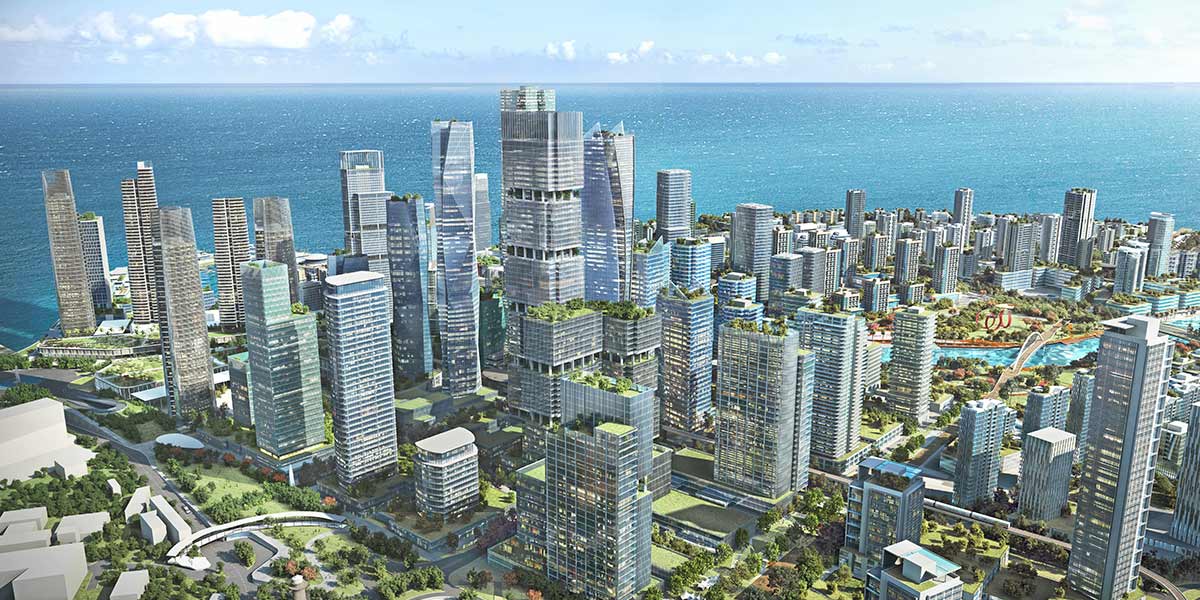
- Home
- Rising Perspectives
- Sri Lanka’s Economic Reform and Resilience: How Port City Colombo Reinforces the Nation’s New Growth Vision
“Reforms in Sri Lanka are bearing fruit and the economic recovery has been remarkable,” Kenji Okamura, Deputy Managing Director, IMF
A few years ago, Sri Lanka found itself at the epicentre of one of the most challenging economic crises in its post-independence history. The country faced soaring inflation, unsustainable debt, and critically low foreign exchange reserves. These pressures, exacerbated by the COVID-19 pandemic, brought the economy in Sri Lanka to a near standstill in 2022. In response, the country launched a bold and wide-ranging reform agenda backed by the International Monetary Fund’s (IMF) Extended Fund Facility (EFF).
Fast forward to today, Sri Lanka’s economic recovery has been remarkable, with reforms backed by the IMF breathing new life into the nation’s growth. With the economic stability in Sri Lanka returning and investor confidence rising, the nation has reignited its ambition to become a regional powerhouse. No longer defined by crisis, it is reasserting its geographic advantage at the crossroads of vital Indian Ocean trade routes, positioning itself as a vital global hub.
Central to this transformation, Port City Colombo—Sri Lanka’s first ever multi-service Special Economic Zone (SEZ)—is reinforcing the nation’s renewed direction as a global hub for trade, investment and innovation, by offering unparalleled opportunities across real estate, tourism, logistics, and financial services.
Backed by international support and strong policy measures, Sri Lanka’s economic reforms are beginning to yield tangible results.
In March 2023, Sri Lanka entered into a 48-month programme under the IMF’s EFF—a US$3 billion arrangement aimed at providing both financial support and comprehensive policy guidance. The reform programme includes fiscal consolidation, revenue mobilisation, debt restructuring, and structural improvements in public financial management.
The Central Bank of Sri Lanka (CBSL) has played a pivotal role in stabilising the current economic situation in Sri Lanka. Its ‘Policy Agenda for 2025 and Beyond’ highlighted several key achievements:
By February 2025, the IMF had completed its Third Review of the programme, unlocking another SDR 254 million (approx. US$334 million). The review confirmed that Sri Lanka was on track with its reform agenda and had made “remarkable progress”, including:
By End-March 2025—upon completing its staff visit to Sri Lanka, the IMF reaffirmed the country’s strong reform momentum and macroeconomic stabilization. Key highlights include:
A faster-than-expected economic rebound has allowed the country to normalise relations with creditors, leading to credit rating upgrades and boosting global investor confidence. The Asian Development Bank (ADB), in its ’Asian Development Outlook (ADO) April 2025,’ forecasts Sri Lanka’s GDP to grow by 3.9% in 2025 and 3.4% in 2026, a sign of confidence that Sri Lanka is no longer just recovering, it’s growing—presenting a wealth of opportunities for global investors looking for new markets in South Asia.

The country’s economic transformation goes beyond stabilising the numbers — it involves changing the entire model. Once primarily an agrarian, export-driven economy, Sri Lanka has transitioned into a more diversified market, with notable growth in manufacturing, services, and infrastructure development. While retaining key foreign income generators like tea, rubber, and tourism, Sri Lanka has taken a more forward-looking model—anchored by landmark developments like Port City Colombo—that prioritises economic resilience and long-term investments with a special focus on attracting Foreign Direct Investments (FDIs).
The government’s economic roadmap clearly targets high-value, export-oriented, and globally relevant sectors. For one, tourism has made a strong comeback, with over 2 million visitors recorded in 2024 and 14% growth continuing into early 2025. Beyond sun and sand, Sri Lanka has made significant investments in infrastructure and hospitality, positioning itself as a premium destination for higher-spending global travellers.
Another key pillar of the country’s reset is its thriving IT and BPM industry, now valued at US$3 billion. This underscores the country’s deliberate pivot to a digital-first economy. Backed by policy incentives, skills development, and expanding global partnerships, the government is targeting US$5 billion in annual ICT exports by 2030.
Meanwhile, with global trade routes evolving and South-South supply chains accelerating, the logistics sector is also set to play a vital role in Sri Lanka’s economic growth. Already contributing US$2 billion – 2.5% of GDP – accounting for 7% of total exports, and employing up to 50,000 full-time professionals, the sector presents tremendous opportunities for investors. Exports, both goods and services, are steadily climbing. In 2024, Sri Lanka’s total export earnings reached US$16.1 billion, with notable year-on-year growth continuing into early 2025.
For global investors, this structural shift opens the door to more diverse, scalable, and lower-risk opportunities.
A broader, multi-sector economy means:

If Sri Lanka’s recovery tells the macro story, Port City Colombo tells the future.
The country’s flagship SEZ is designed from the ground up to compete with the world’s leading business hubs. With direct access to the Indian Ocean’s busiest trade routes, Port City Colombo offers a gateway to South Asia, the Middle East, and East Africa.
For investors, what stands out is the robust regulatory environment that enhances the ease of doing business in Sri Lanka, as governed by the Colombo Port City Economic Commission (CPCEC), the regulatory authority and single-window investment facilitator for the Colombo Port City Special Economic Zone. This lays the groundwork for Port City Colombo to emerge as a premier hub for international investors and financial institutions.
This creates real opportunity across high-growth sectors:
After a period of reform and realignment, inflation in Sri Lanka has been curbed, foreign reserves are strengthening, and economic reforms are delivering results.
“Reforms in Sri Lanka are bearing fruit and the economic recovery has been remarkable. Inflation remains low, revenue collection is improving, and reserves continue to accumulate,” said Kenji Okamura, Deputy Managing Director, IMF.
Most investors know: real opportunity lies not in perfection, but in well-timed transformation. That’s exactly where Sri Lanka stands today.
Sri Lanka is ushering in a new era — one defined not only by recovery but by reinvention.
As of 2024, Sri Lanka’s real GDP had recovered 40% of the losses incurred between 2018 and 2023. The IMF expects the recovery “to continue in 2025,” an indication that the nation’s economy is evolving and the foundations for sustainable growth are firmly in place. Nowhere is this more visible than in Port City Colombo, a flagship development built to welcome global capital and business.
With reforms taking hold, investor confidence returning, and key sectors gaining momentum, the country is shaping a new growth narrative defined by a strong purpose and vision.
Port City Colombo is the embodiment of that ambition. For Sri Lanka, it’s a vehicle to accelerate progress. For investors, it’s a gateway to growth in the region — a chance to help shape a high-potential future not as observers, but as active partners.
Join the transformation. Visit Investor Relations or Contact Us to discover how your business can thrive in Sri Lanka’s next chapter of growth at Port City Colombo.
